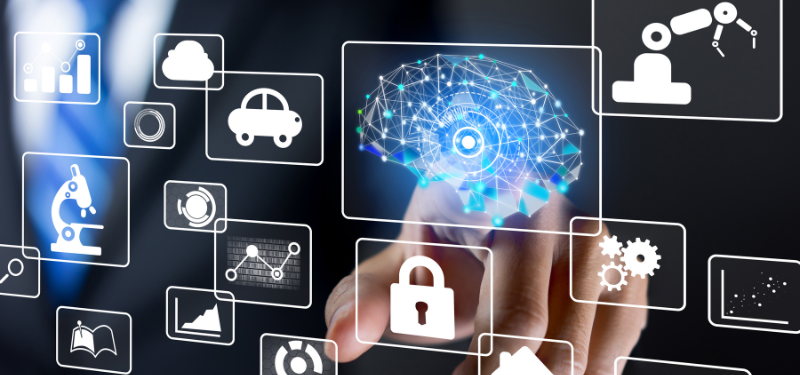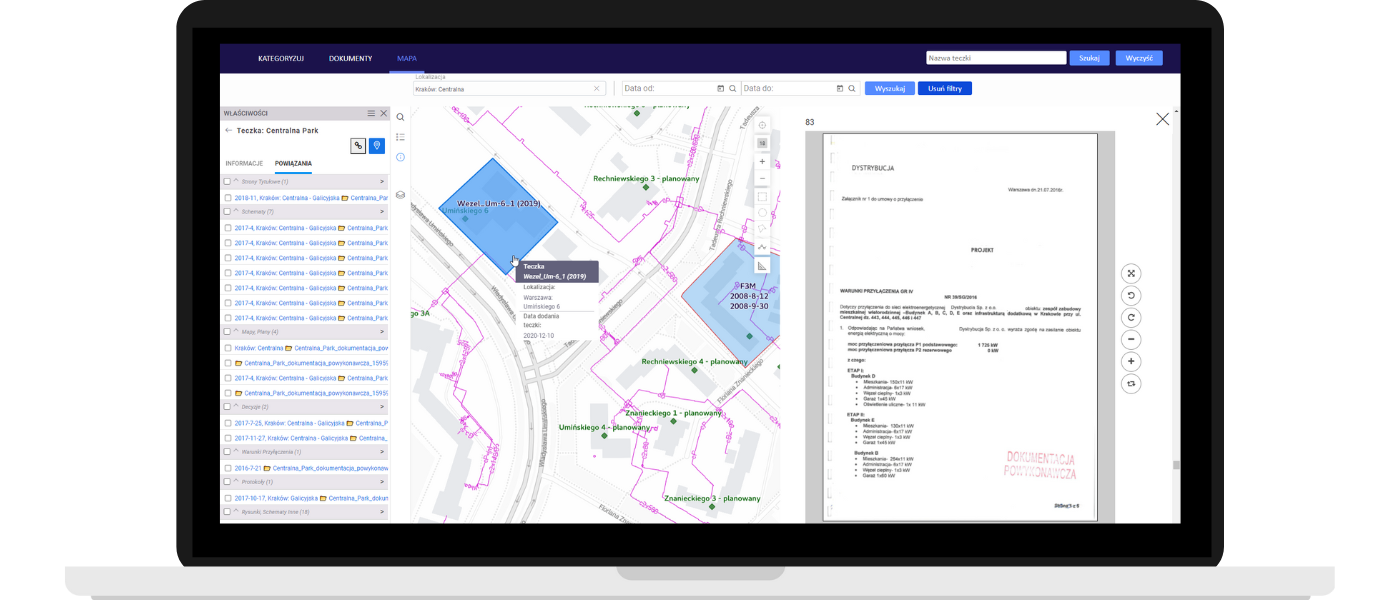
Artificial Intelligence (AI) is a technology transforming our lives, including how we do business. An increasing number of companies use solutions based on AI. One of the key elements of Artificial Intelligence is Machine Learning (ML). It’s what software uses to process and interpret data.
Read this article to learn about the role of Machine Learning in the AI development process. In this text, we’re also explaining the differences between AI and ML and talking about their use cases.
What is Artificial Intelligence (AI)?
Artificial Intelligence allows the software to imitate human thinking. What does it mean? Programs using AI, similar to humans, can interpret data and draw logical conclusions. This brings benefits, such as the ability to…
- Adapt according to changing data,
- Understand user commands, even if they aren’t precise and pre-defined,
- Analyze large datasets and recognize patterns.
AI is a vast field with a number of narrower sub-fields, e.g., Machine Learning, Natural Language Processing, or Neural Networks.
What is Machine Learning (ML)?
Machine Learning is one of the solutions used within the AI field. ML focuses on data processing and interpretation, which automatically improve AI algorithms. It allows programs to “learn” how to work properly through processing data instead of following commands based on instructions written by software developers. A program submitted to MI and constantly “learning” is getting automatically improved.
To simplify, we could say that ML is responsible for providing AI-enabled software with data. With those data, the software becomes more efficient.
There are 3 main types of Machine Learning:
- Supervised learning – requires input data and correct answers.
- Unsupervised learning – requires input data only. The program has to identify data patterns on its own.
- Reinforcement learning – requires input data and defining “punishments and rewards” so that the program learns from its mistakes and the process is faster.

Artificial Intelligence vs Machine Learning
As we already mentioned, Machine Learning is a narrower sub-field of Artificial Intelligence. If we compared AI and ML to a car, AI would be the entire vehicle, made of different parts. ML would be the car’s engine. Machine Learning is used for processing large amounts of data. Artificial Intelligence uses those data to operate. Therefore, ML “drives” AI-based solutions.
ML is useful in the case of repetitive processes with little variability. A use case example is recommendation systems on platforms such as Google or Netflix. These systems learn user behaviors to create personalized suggestions.
Machine Learning is also helpful when processing business documentation. We’ll talk more about this in the next part.
What are some of the AI and ML use cases?
An increasing number of areas are supported by AI. Some examples include data collection and digitization. In the energy sector, AI helps prevent outages and forecast energy production. Let’s take a closer look at some solutions using AI.
Faster document digitization
Digitization of business documentation comes with many benefits. First, it simplifies finding information and using data in different business processes and operations simultaneously. Manual data processing is tedious and time-consuming. Document contents need to be copied by hand and properly categorized. It’s related to a high risk of errors.
What can help in this process is document scanning. However, scanned documentation still needs to be categorized. Some data, e.g., agreement dates or values, should still be copied by hand to enable searching within the database.
The iDoc solution based on AI and ML answers the problems mentioned above. iDoc helps retrieve information from scanned documents as much as 10 times faster than any human can do. iDoc processes documents – reads their contents and matches them with the right category. This means iDoc determines the document type, e.g., an agreement or a notarial act. Moreover, the application automatically finds defined data in documents, such as client information, agreement dates, etc. Then, iDoc fills out the company’s databases.
With this solution, employees only need to scan the documentation and verify data correctness. The entire process is faster and less prone to errors. Employees can spend their saved working time on other, more critical tasks.
Spatial document databases
Another solution that uses AI to support your work with documents is LocDoc. This application digitizes paper technical documentation of geographically dispersed objects, such as network assets. LocDoc automatically categorizes documents, including protocols, agreements, decisions, or maps. It analyzes their contents and assigns dates and locations, creating a digital, spatial document database. You can find an example below:

Clicking the location on the map takes you to the documentation about related objects.
Tools for collecting data in the field
Artificial Intelligence can also help technicians and fieldwork employees effectively collect data in the field. Mobile apps powered by voice and image recognition mechanisms play a crucial role in this process. They eliminate the need for manually collecting data. This accelerates the work and unifies data formats, increasing their quality. Data is also instantly entered into internal databases or network inventory systems.
An example of such an application is LV Topology, helping collect data about low-voltage energy networks. LV Topology is equipped with a voice-control module and image recognition mechanisms that detect and read technical data in photos. Therefore, technicians can collect all data by dictating with their voice and taking photos through the app installed on their phones.
Another application with similar mechanisms is a mobile app, NIMS Outages, for reporting power line repairs.
We created both apps mentioned above with our Mobile Data Collector platform. It allows us to build custom applications for collecting data in the field. Apps built with our platform can be adjusted to specific data collection processes and use image and voice analysis as well as data from mobile device sensors.
You can read more about apps for collecting data in the field in this article.
Forecasts of renewable energy production
Another AI use case scenario is in the area of renewable energy production. Globema’s 4RES system uses dedicated weather forecasts and predictive models to create precise forecasts of energy generated from renewable energy sources (RES).
Solutions based on Artificial Intelligence get new use cases in almost every industry. They already significantly improve everyday tasks and each day, their capabilities grow.
Did you find this article interesting? Are you considering implementing solutions based on AI/ML?











